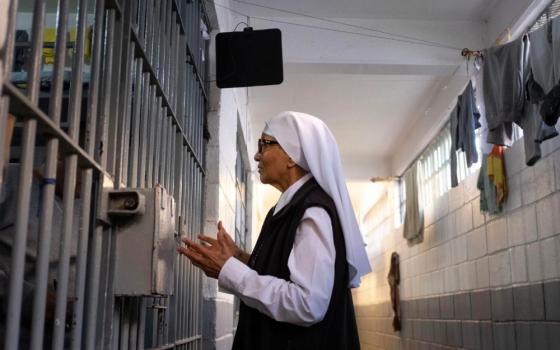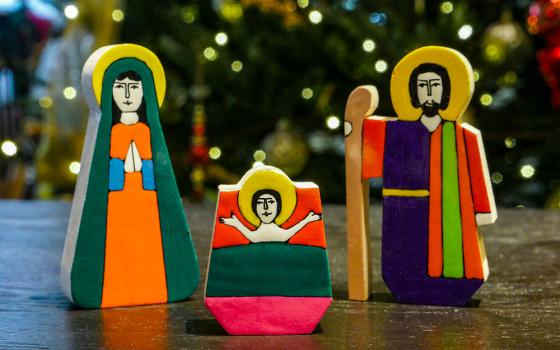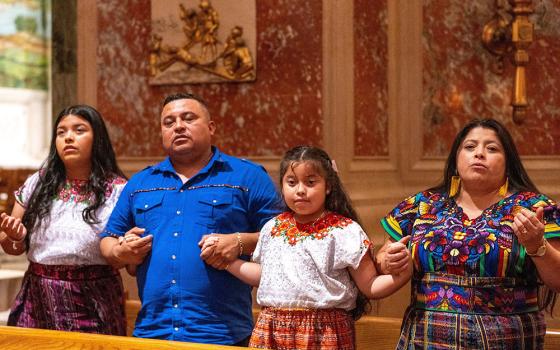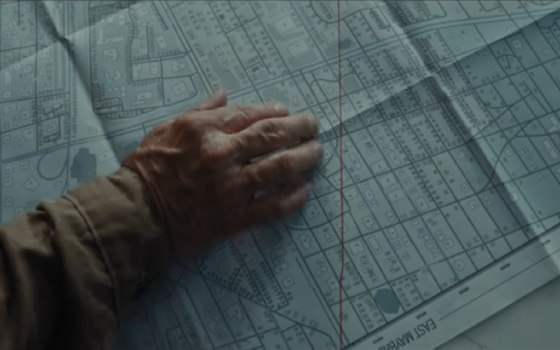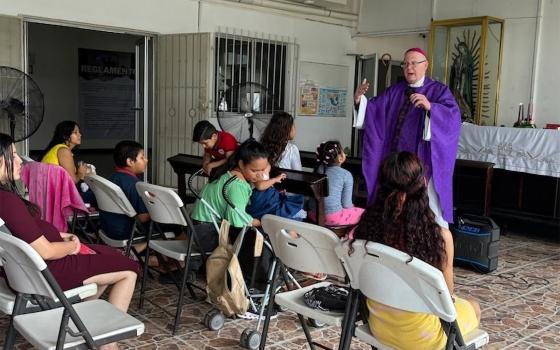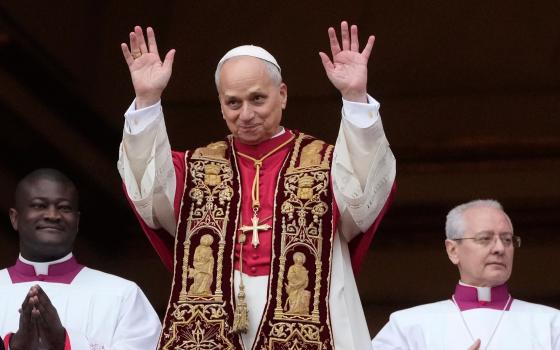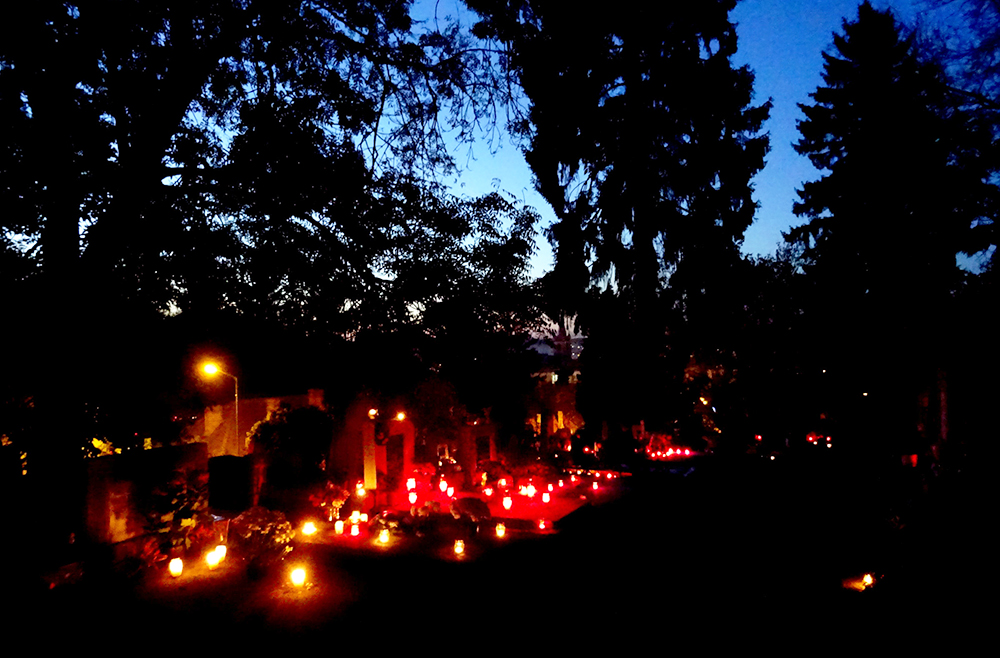
Catholic cemetery in Târgu Mureș, in Transylvania, Romania (Wikimedia Commons/Whitepixels, CC0 1.0 Universal)
God's love story with humanity begins with a kiss. The creature molded by God from clay receives the breath of God so that it can begin to exist, to be a living creature. That breath is offered to humanity by a kiss. God's breath. This kiss made the human an image of God.
A kiss is the highest visible act of communion between God and humanity with deep echoes in Jewish mysticism and later in Christianity. The moment of death in the Bible (Deuteronomy 34:5) is often described as the Kiss of God, by which God takes back the breath put into each human. According to Jewish tradition this is how Moses dies. God touches Moses, lip to lip, and receives his breath.
In 2008, Camilian Demetrescu, a renowned Romanian painter and sculptor whose works are appreciated internationally, donated a collection of tapestry paintings to Pope Benedict XVI. They were on display in the pope's private audience rooms. Among them is a symbolic tapestry painting called: "Death as God's Kiss."
Demetrescu represents death as the event that leads the human person to true life: "Death, the gate of life." In the center of the painting is a cosmic profile of God bending over the human person to take his breath and with it, his spirit in universal harmony. God's kiss represents passage from one life to another life. It is a new beginning: The body is returned to the earth and the soul to God.
Several symbols appear in the corners of the painting. In the upper left is a swan with two heads, on its wings is written alpha and omega. This represents eternity: Christ, the beginning and the end, the alpha and the omega. In the upper right is a swan diving for fish, it represents the Christ, fisherman of souls, who catches the soul and takes it to heaven. In the lower left is a dove flying out of the cage, representing the soul leaving the body. In the lower right is a fish representing the soul which faithfully follows the ship of the church with the cross-shaped mast/tree.
To perceive death as God's kiss is a blessing. As death approaches, a person can perceive it as the highest form of indescribable love between a creature and their Creator. Thus, we no longer say that a human dies, but rather, ascends to the source of love in an embrace as wide as the entire universe through the act of the most intimate union, a kiss.
'Illumination' is a special day
Every year on Nov. 1, people in Transylvania, Banat and Maramureș, Romania, celebrate the Day of the Dead, also called Illumination. Participants include Roman Catholics, Greek Catholics, Orthodox, Protestants and Reformed believers.
Why is the Day of the Dead celebrated on Nov. 1 only in these regions and not throughout Romania? Romania is predominantly Orthodox, and the Orthodox Church, along with the Byzantine Catholic Church, commemorates the dead on the Saturday before Lent and the Saturday before Pentecost. However, in areas with Western influence, such as Transylvania, people of different faiths celebrate together, and many families are mixed.
The Day of the Dead, or Illumination, is celebrated in the afternoon and evening of Nov. 1, when people go to the cemetery, clean the graves and decorate them with fresh flowers, especially chrysanthemums, which are considered symbols of eternity and purity. Then candles and lamps are lit, and each grave turns into a small altar of light at night. Cemeteries come alive in a special way: They are lit by thousands of warm candle flames.
Each grave tells a story, and families gather, sometimes from far away, to honor their loved ones. Year after year, the sky descends to the earth, and the stars mingle among the candles and flowers, watered by the tears of longing for those who have gone to the Lord. Light symbolizes both the hope of salvation and the warmth and light that loved ones have brought into our lives. Through this light, people express their love and respect for the departed and invoke peace and eternal rest for the souls. Light is a bridge and a ladder to their souls.
The families who don't see each other often during the year make time during the Day of the Dead to be together, and share memories around the graves of their loved ones. The Day of the Dead is an opportunity for different generations in a family to reconnect, to teach young people about their ancestors, and keep family stories and traditions alive.
Advertisement
Ion Mureșan's poem "Luminația," published in Revista Conta (8/2011), delves into the profound significance of the Day of the Dead, or Luminația, in Romanian culture. He describes it as "the day of His Enlightenment of the Dead," a time when ancestors emerge from the shadows of memory into the light of remembrance. Mureșan poetically portrays the candle's flame as a "lens" through which one can glimpse the faces of departed loved ones, suggesting that each flame is a "hole in the wall of Heaven," allowing the living to connect with the deceased. He then adds, "Until then, every year I put a candle on a few graves that no one comes to. I put a lens through which a soul to whom no one has come to the speaker can see the village one more time."
According to popular legends, on the night of Nov. 1, the gates between the two worlds open, and the departed among us can come to visit us. Candles are lit at graves so that those in the afterlife might find their way with greater ease now that the gates between the two worlds are open. In some areas, people take sweets to the cemetery to give to children. In other areas, a rich meal is prepared for the poor.
Illumination is a special day for me, for my family and for my community. It is a day when I go to the cemetery to visit my deceased parents and the sisters from my community. It is a day of the soul — an opportunity for meditation and prayer, for showing respect for the dead.
The image of the illuminated cemetery urges me to reflect and remember, it makes me think that death is not death, but still-life — life in another form. This day, marked by prayer and remembrance of those who have passed into eternal life, is one of the most emotionally charged in the Romanian spiritual calendar.
A version of this column previously appeared here.

